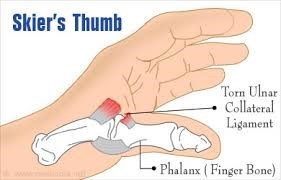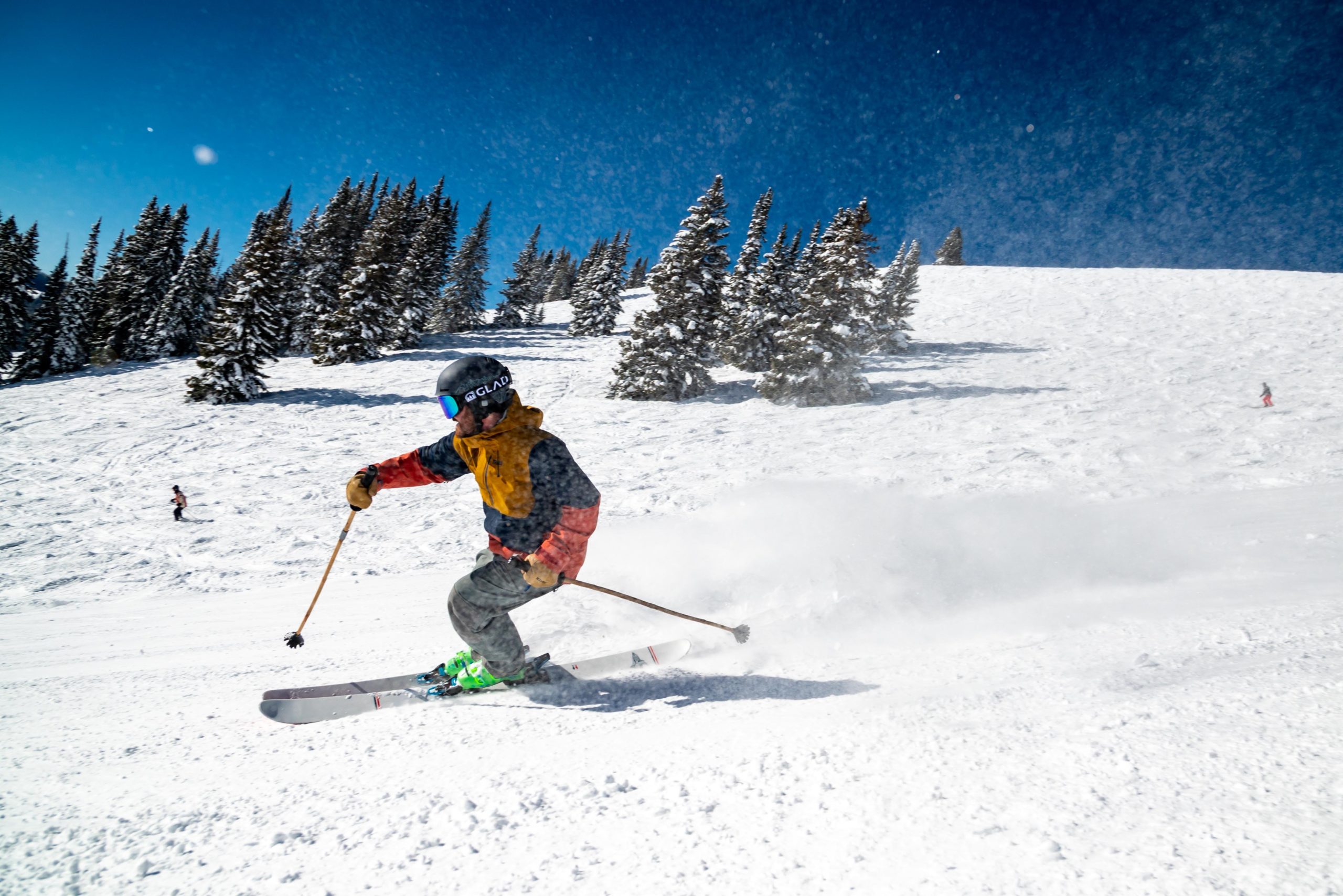What is Skier’s Thumb?
Are you experiencing thumb pain after a recent fall on the ice or while skiing? It could be Skier’s Thumb.
Skiers thumb is an injury to the Ulnar Collateral Ligament that stabilizes the thumb metacarpal-phalangeal joint (MCP joint). The injury could be a mild to severe sprain of the ligament or the ligament could be completely torn away from the bone.
How does the injury happen?
This injury commonly occurs when the thumb is pulled away from the rest of the hand in a forceful manner. For example, when putting your hand out to brace for a fall. It is called skier’s thumb because the position of a ski pole naturally separates the thumb from the rest of the hand. When a skier tries to brace for a fall the thumb is pushed away from the hand.

What are common indications that the thumb MCP UCL has been injured?
If the ligament is sprained but still intact then you will experience pain at the inside of the thumb MCP joint. This might happen when trying to hold or grip things. There will likely be the presence of swelling around the joint and possibly bruising. It might be difficult to perform the following activities:
- Grip and pull zippers
- Manipulate buttons
- Squeeze a toothpaste tube
- Apply pressure for writing
- Use the hand for chopping vegetables
- Turning the key in the car ignition
- Lifting/holding objects with the thumb positioned away from the hand
If the ligament has torn away from the bone, the thumb will be painful and unstable when you try to use it. The thumb MCP joint will have difficulty resisting forces and may even appear out of alignment when comparing it to the uninjured thumb. Swelling and bruising may also be present.
How is Skier’s Thumb Diagnosed?
If you suspect you have injured the thumb MCP UCL ligament it is important to be evaluated by a doctor, nurse practitioner, or physician assistant. An examination along with x-rays can assist with the diagnosis and rule out any possible fractures or joint dislocations.
How long does it take for Skier’s Thumb to heal?
The pain and swelling associated with skier’s thumb usually decreases significantly in 2-3 weeks. This allows the individual to start using the hand again for light activities. Assuming the ligament is not completely torn, it is not typically ready to resist forceful loads for another 4-6 weeks. This will depend on the severity of the sprain.
What is the treatment for skier’s thumb?
Initial treatment would include:
- Ice to minimize swelling
- Rest to prevent stressing the injured ligament
- Possibly a custom splint to protect the healing ligament

After the first 72 hours, it would be appropriate to switch from ice to heat. At this point you can slowly start moving the thumb through its normal range. Avoid any painful positions or activities (such as heavy gripping/pulling/twisting). It is still advised to avoid forceful loads on the healing ligament for several weeks.
A splint is extremely helpful in protecting the healing joint. Splinting will still allow for functional use of the hand for home, leisure, and work activities. As pain and swelling decrease and thumb motion progresses, then it is appropriate to start strengthening the thumb by adding light force/resistance exercises. Wearing the splint in between exercise sessions will allow the thumb to rest and avoid re-injury. When progressing to full functional use of the thumb, be sure to pay attention to pain. Try to avoid stressing the joint with too much force too quickly.
If the ligament is completely torn away from the bone then it is best to consult with an Orthopedic Surgeon or Physician’s Assistant.
How can we help?
At Alaska Hand Rehabilitation, we specialize in customized splinting. Our staff therapists would be happy to create a splint for you, recommend exercises and perform therapeutic modalities to speed your recovery process. If you would like more information or to schedule an appointment, please contact us!
Written By: Libby Barnaby, OTR/L, CHT

